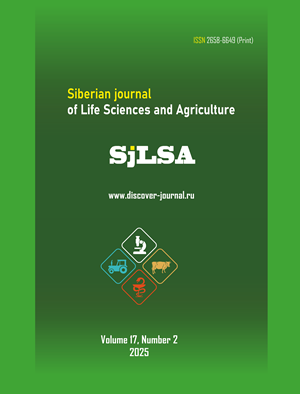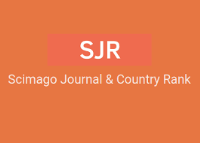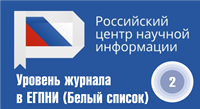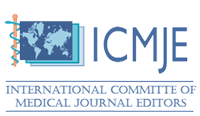Оценка взаимосвязи уровня соматотропина в волосе с мясными качествами бычков герефордской породы
Аннотация
Обоснование. Вопрос о применении волос в качестве индикатора долгосрочных изменений метаболизма соматотропина в организме бычков раскрыт недостаточно. Более того практически полностью отсутствует информация о взаимосвязи уровня соматотропина в волосе с мясными качествами бычков, что и обусловило актуальность настоящего исследования.
Цель. Изучить влияние обменного пула соматотропина, оцененного по его концентрации в волосе на мясные качества бычков герефордской породы.
Материалы и методы. Исследования выполнены на бычках герефордской породы. Животные в зависимости от уровня соматотропина в волосах были разделены на три группы: I – (53,4-57,1 пг/мг); II – (57,3 до 61,8 пг/мг); III – (62,1 до 67,1 пг/мг).
Результаты. Бычки с максимальным уровнем соматотропина имели наивысшие показатели по интенсивности весового роста. Животные этой группы имели более высокую убойную массу и содержание протеина в мясе, на фоне меньшего содержания жира. Увеличение концентрации соматотропина в волосе сопровождалось повышением концентраций лейцин+изолейцина, триптофана, гистидина, метионина, снижением фенилаланина и серина, а также увеличением концентраций полинасыщенных жирных кислот длиннейшей мышце спины. В длиннейшей мышце, бычков с максимальным уровнем соматотропина в волосе, содержалось больше кальция, меди, цинка и йода, при относительно низких концентрациях свинца.
Заключение. Уровень концентрации соматотропина в волосах с холки, тесно связан интенсивностью весового роста, мясной продуктивностью и качеством мяса бычков герефордской породы, что позволяет рассматривать волос в качестве биосубстрата для оценки долгосрочных изменений уровня соматотропина в организме, при разработке мероприятий, направленных на повышение мясной продуктивности бычков.
Информация о спонсорстве. Исследования проведены при финансовой поддержке Российского научного фонда по проекту № 24-16-00093.
EDN: UEOKFS
Скачивания
Литература
Калашников, А. П., Фисинин, В. И., Щеглов, В. В., & Первов, Н. Г. (2003). Нормы и рационы кормления сельскохозяйственных животных. Москва: Знание. 456 с. ISBN: 5-94587-093-5 EDN: https://elibrary.ru/PXQMHL
Кононенко, С. И., Харламов, А. В., Завьялов, О. А., & Харламов, В. А. (2009). Продуктивность бычков, полученных в разные сезоны года. Труды Кубанского государственного аграрного университета, 19, 197-203. EDN: https://elibrary.ru/KVLOCL
Харламов, А. В., Завьялов, О. А., Фролов, А. Н., Курилкина, М. Я., & Королёв, В. Л. (2017). Эффективность производства говядины при различных технологиях доращивания и откорма. Вестник мясного скотоводства, (2), 93-99. EDN: https://elibrary.ru/YTOCPP
Anh, N. T. L., Kunhareang, S., & Duangjinda, M. (2015). Association of Chicken Growth Hormones and Insulin-like Growth Factor Gene Polymorphisms with Growth Performance and Carcass Traits in Thai Broilers. Asian-Australas J Anim Sci, 28, 1686-1695. https://doi.org/10.5713/ajas.15.0028
Asimov, G. J., & Krouze, N. K. (1937). The lactogenic preparations from the anterior pituitary and the increase of milk yield in cows. J Dairy Sci, 20, 289-306.
Aytac, A. K., Bilal, A. K., & Davut, B. (2015). Determination of the alui polymorphism effect of bovine growth hormone gene on carcass traits in Zavot cattle with analysis of covariance. Turk J Vet Anim Sci, 39, 16-22.
Baier, F., Grandin, T., Engle, T., & Edwards-Callaway, L. (2019). Evaluation of Hair Characteristics and Animal Age on the Impact of Hair Cortisol Concentration in Feedlot Steers. Front Vet Sci, 6, 323. https://doi.org/10.3389/fvets.2019.00323
Berryman, D. E., & List, E. O. (2017). Growth Hormone’s effect on adipose tissue: quality versus quantity. Int J Mol Sci, 8, 1621.
Braun, U., Michel, N., Baumgartner, M. R., Hässig, M., & Binz, T. M. (2017). Cortisol concentration of regrown hair and hair from a previously unshorn area in dairy cows. Res Vet Sci, 114, 412-415. https://doi.org/10.1016/j.rvsc.2017.07.005
Bristow, D. J., & Holmes, D. S. (2007). Cortisol levels and anxiety-related behaviors in cattle. Phys Behav, 90, 626-638. https://doi.org/10.1016/j.physbeh.2006.11.015
Brown-Borg, H. M. (2009). Hormonal control of aging in rodents: the somatotropic axis. Mol Cell Endocrinol, 299, 64-71. https://doi.org/10.1016/j.mce.2008.07.001
Burnard, C., Ralph, C., Hynd, P., Hocking Edwards, J., & Tilbrook, A. (2017). Hair cortisol and its potential value as a physiological measure of stress response in human and non-human animals. Anim Prod Sci, 57, 401-414. https://doi.org/10.1071/AN15622
Burnett, T. A., Madureira, A. M., Silper, B. F., Tahmasbi, A., Nadalin, A., Veira, D. M., & Cerri, R. L. (2015). Relationship of concentrations of cortisol in hair with health, biomarkers in blood, and reproductive status in dairy cows. J Dairy Sci, 98(7), 4414-4426. https://doi.org/10.3168/jds.2014-8871
Bush, J. A., Wu, G., Suryawan, A., Nguyen, H. V., & Davis, T. A. (2002). Somatotropin-induced amino acid conservation in pigs involves differential regulation of liver and gut urea cycle enzyme activity. The Journal of Nutrition, 132(1), 59-67. https://doi.org/10.1093/jn/132.1.59
Cantalapiedra-Hijar, G., Abo-Ismail, M., Carstens, G. E., Guan, L. L., Hegarty, R., Kenny, D. A., McGee, M., Plastow, G., Relling, A., & Ortigues-Marty, I. (2018). Review: Biological determinants of between-animal variation in feed efficiency of growing beef cattle. Animal, 12(s2), 321-335. https://doi.org/10.1017/S1751731118001489
Carrell, R. C., Smith, W. B., Kinman, L. A., Mercadante, V. R. G., Dias, N. W., & Roper, D. A. (2021). Cattle stress and pregnancy responses when imposing different restraint methods for conducting fixed time artificial insemination. Anim Reprod Sci, 225, 106672. https://doi.org/10.1016/j.anireprosci.2020.106672 EDN: https://elibrary.ru/FSFANM
Comin, A., Prandi, A., Peric, T., Corazzin, M., Dovier, S., & Bovolenta, S. (2011). Hair cortisol levels in dairy cows from winter housing to summer highland grazing. Livest Sci, 138, 69-73. https://doi.org/10.1016/j.livsci.2010.12.009
Dehkhoda, F., Lee, C. M. M., Medina, J., & Brooks, A. J. (2018). The growth hormone receptor: mechanism of receptor activation, cell signaling, and physiological aspects. Front Endocrinol (Lausanne), 9, 35. https://doi.org/10.3389/fendo.2018.00035
Devesa, J., Almengló, C., & Devesa, P. (2016). Multiple Effects of Growth Hormone in the Body: Is it Really the Hormone for Growth? Clin Med Insights Endocrinol Diabetes, 9, 47-71. https://doi.org/10.4137/CMED.S38201
Dumbell, R. (2022). An appetite for growth: The role of the hypothalamic-pituitary-growth hormone axis in energy balance. J Neuroendocrinol, 34(6), e13133. https://doi.org/10.1111/jne.13133 EDN: https://elibrary.ru/UVOOVW
Flores, J., García, J. E., Mellado, J., Gaytán, L., de Santiago, Á., & Mellado, M. (2019). Effect of growth hormone on milk yield and reproductive performance of subfertile Holstein cows during extended lactations. Spanish J. Agric. Res, 17(11), e0403. https://doi.org/10.5424/sjar/2019171-13842 EDN: https://elibrary.ru/REWXBZ
Florini, J. R., Ewton, D. Z., & Coolican, S. A. (1996). Growth hormone and the insulin-like growth factor system in myogenesis. Endocr Rev, 17, 481-517. https://doi.org/10.1210/edrv-17-5-481
Furigo, I. C., Teixeira, P. D. S., & de Souza, G. O. (2019). Growth hormone regulates neuroendocrine responses to weight loss via AgRP neurons. Nat Commun, 1, 662. https://doi.org/10.1038/s41467-019-08607-1 EDN: https://elibrary.ru/HMFRHT
Ghassemi Nejad, J., Lee, B. H., Kim, J. Y., Chemere, B., Sung, K. I., & Lee, H. G. (2021). Effect of alpine grazing on plasma and hair cortisol, serotonin, and DHEA in dairy cows and its welfare impact. Domest Anim Endocrinol, 75, 106581. https://doi.org/10.1016/j.domaniend.2020.106581 EDN: https://elibrary.ru/NFZMZK
Gómez, C. A., Fernández, M., Franco, N., & Cueva, R. (2022). Effect of two formulations of recombinant bovine somatotropin on milk production and body condition of cattle under intensive management in Peru. Trop Anim Health Prod, 54(2), 96. https://doi.org/10.1007/s11250-021-03036-z EDN: https://elibrary.ru/MZNKYE
Gow, R., et al. (2010). An assessment of cortisol analysis in hair and its clinical applications. Forensic science international, 196(1-3), 32-37. https://doi.org/10.1016/j.forsciint.2009.12.040
Heimbürge, S., Kanitz, E., Tuchscherer, A., & Otten, W. (2020). Within a hair’s breadth — Factors influencing hair cortisol levels in pigs and cattle. Gen Comp Endocrinol, 1(288), 113359. https://doi.org/10.1016/j.ygcen.2019.113359
Holzer, Z., Aharoni, Y., Brosh, A., Orlov, A., Veenhuizen, J., & Kasser, T. R. (1999). The effects of long-term administration of recombinant bovine somatotropin (Posilac) and Synovex on performance, plasma hormone and amino acid concentration, and muscle and subcutaneous fat fatty acid composition in Holstein-Friesian bull calves. Journal of Animal Science, 77(6), 1422-1430. https://doi.org/10.2527/1999.7761422x
Jia, J., Ahmed, I., Liu, L., Liu, Y., Xu, Z., Duan, X., Li, Q., Dou, T., Gu, D., Rong, H., Wang, K., Li, Z., Talpur, M. Z., Huang, Y., & Wang, S., et al. (2018). Selection for growth rate and body size have altered the expression profiles of somatotropic axis genes in chickens. PLoS One, 13(4), e0195378. https://doi.org/10.1371/journal.pone.0195378
Kalashnikov, V., Zajcev, A., Atroshchenko, M., Kalinkova, L., Kalashnikova, T., Miroshnikov, S., Frolov, A., & Zav’yalov, O. (2018). The content of essential and toxic elements in the hair of the mane of the trotter horses depending on their speed. Environmental Science and Pollution Research, 25(22), 21961-21967. https://doi.org/10.1007/s11356-018-2334-2 EDN: https://elibrary.ru/YBUALJ
Levakhin, V. I., Gorlov, I. F., Azhmuldinov, E. A., Levakhin, Yu. I., Duskaev, G. K., Zlobina, E. Yu., & Karpenko, E. V. (2017). Change in physiological parameters of calves of various breeds under the transport and preslaughter stress. Nusantara Bioscience, 9(1), 1-5. https://doi.org/10.13057/nusbiosci/n090101 EDN: https://elibrary.ru/ZVTZPJ
Meyer, J., Novak, M., Hamel, A., & Rosenberg, K. (2014). Extraction and analysis of cortisol from human and monkey hair. J Vis Exp, 24(83), e50882. https://doi.org/10.3791/50882
Miroshnikov, S., Kharlamov, A., Zavyalov, O., Frolov, A., Duskaev, G., Bolodurina, I., & Arapova, O. (2015). Method of sampling beef cattle hair for assessment of elemental profile. Pakistan Journal of Nutrition, 14(9), 632-636. https://doi.org/10.3923/pjn.2015.632.636 EDN: https://elibrary.ru/UZXNBR
Miroshnikov, S., Zavyalov, O., Frolov, A., Bolodurina, I., Skalny, A., Kalashnikov, V., Grabeklis, A., & Tinkov, A. (2017). The Reference Intervals of Hair Trace Element Content in Hereford Cows and Heifers (Bos Taurus). Biological trace element Research, 180(1), 456-462. https://doi.org/10.1007/s12011-017-0991-5 EDN: https://elibrary.ru/XNCEKI
Miroshnikov, S. A., Zavyalov, O. A., Frolov, A. N., Skalny, A. V., & Grabeklis, A. R. (2020). The reference values of hair content of trace elements in dairy cows of holstein breed. Biological Trace Element Research, 194(1), 145-151. https://doi.org/10.1007/s12011-019-01768-6 EDN: https://elibrary.ru/PILFQC
Peric, T., Comin, A., Corazzin, M., Montillo, M., Cappa, A., Campanile, G., & Prandi, A. (2013). Short communication: hair cortisol concentrations in Holstein-Friesian and crossbreed F1 heifers. J Dairy Sci, 96(5), 3023-3027. https://doi.org/10.3168/jds.2012-6151 EDN: https://elibrary.ru/YDIAGD
Rezaei, R., Wu, Z., Hou, Y., Bazer, F. W., & Wu, G. (2016). Amino acids and mammary gland development: nutritional implications for milk production and neonatal growth. J Anim Sci Biotechnol, 2(7), 20. https://doi.org/10.1186/s40104-016-0078-8 EDN: https://elibrary.ru/YDFGZI
Russell, E., Koren, G., Rieder, M., & Van Uum, S. (2012). Hair cortisol as a biological marker of chronic stress: current status, future directions and unanswered questions. Psychoneuroendocrinology, 37, 589-601. https://doi.org/10.1016/j.psyneuen.2011.09.009
Skoupá, K., Šťastný, K., & Sládek, Z. (2022). Anabolic Steroids in Fattening Food-Producing Animals-A Review. Animals (Basel), 18(16), 2115. https://doi.org/10.3390/ani12162115 EDN: https://elibrary.ru/XBKHGY
Steyn, F. J., Xie, T. Y., Huang, L., Ngo, S. T., Veldhuis, J. D., Waters, M. J., & Chen, C. (2013). Increased adiposity and insulin correlates with the progressive suppression of pulsatile gh secretion during weight gain. J Endocrinol, 218(2), 233-244. https://doi.org/10.1530/JOE-13-0084
Tallo-Parra, O., Carbajal, A., Monclús, L., Manteca, X., & Lopez-Bejar, M. (2018). Hair cortisol and progesterone detection in dairy cattle: interrelation with physiological status and milk production. Domest Anim Endocrinol, 64, 1-8. https://doi.org/10.1016/j.domaniend.2018.02.001
Tallo-Parra, O., Manteca, X., Sabes-Alsina, M., Carbajal, A., & Lopez-Bejar, M. (2015). Hair cortisol detection in dairy cattle by using EIA: protocol validation and correlation with faecal cortisol metabolites. Animal, 9(6), 1059-1064. PMID: 25997530. https://doi.org/10.1017/S1751731115000294
Vann, R. V., Nguyen, H. V., Reeds, P. J., Burrin, D. G., Fiorotto, M. L., Steele, N. C., Deaver, D. R., & Davis, T. A. (2000). Somatotropin increases protein balance by lowering body protein degradation in fed, growing pigs. Am. J. Physiol, 278, E477-E483. https://doi.org/10.1152/ajpendo.2000.278.3.E477
Zavyalov, O. A., Frolov, A. N., Medetov, E. S., Aldyyarov, T. B., & Sycheva, I. N. (2024). Effect of the level of somatotropin hormone in blood serum on the meat productivity of Aberdeen angus bulls. BIO Web of Conferences, 121, 02009. https://doi.org/10.1051/bioconf/202412102009 EDN: https://elibrary.ru/IVUBIA
References
Kalashnikov, A. P., Fisinin, V. I., Shcheglov, V. V., & Pervov, N. G. (2003). Norms and rations for feeding farm animals. Moscow: Znanie. 456 p. ISBN: 5-94587-093-5 EDN: https://elibrary.ru/PXQMHL
Kononenko, S. I., Kharlamov, A. V., Zavyalov, O. A., & Kharlamov, V. A. (2009). Productivity of bulls born in different seasons of the year. Proceedings of the Kuban State Agrarian University, 19, 197-203. EDN: https://elibrary.ru/KVLOCL
Kharlamov, A. V., Zavyalov, O. A., Frolov, A. N., Kurilkina, M. Ya., & Korolev, V. L. (2017). Efficiency of beef production under different technologies of rearing and fattening. Bulletin of Meat Cattle Breeding, (2), 93-99. EDN: https://elibrary.ru/YTOCPP
Anh, N. T. L., Kunhareang, S., & Duangjinda, M. (2015). Association of Chicken Growth Hormones and Insulin-like Growth Factor Gene Polymorphisms with Growth Performance and Carcass Traits in Thai Broilers. Asian-Australas J Anim Sci, 28, 1686-1695. https://doi.org/10.5713/ajas.15.0028
Asimov, G. J., & Krouze, N. K. (1937). The lactogenic preparations from the anterior pituitary and the increase of milk yield in cows. J Dairy Sci, 20, 289-306.
Aytac, A. K., Bilal, A. K., & Davut, B. (2015). Determination of the alui polymorphism effect of bovine growth hormone gene on carcass traits in Zavot cattle with analysis of covariance. Turk J Vet Anim Sci, 39, 16-22.
Baier, F., Grandin, T., Engle, T., & Edwards-Callaway, L. (2019). Evaluation of Hair Characteristics and Animal Age on the Impact of Hair Cortisol Concentration in Feedlot Steers. Front Vet Sci, 6, 323. https://doi.org/10.3389/fvets.2019.00323
Berryman, D. E., & List, E. O. (2017). Growth Hormone’s effect on adipose tissue: quality versus quantity. Int J Mol Sci, 8, 1621.
Braun, U., Michel, N., Baumgartner, M. R., Hässig, M., & Binz, T. M. (2017). Cortisol concentration of regrown hair and hair from a previously unshorn area in dairy cows. Res Vet Sci, 114, 412-415. https://doi.org/10.1016/j.rvsc.2017.07.005
Bristow, D. J., & Holmes, D. S. (2007). Cortisol levels and anxiety-related behaviors in cattle. Phys Behav, 90, 626-638. https://doi.org/10.1016/j.physbeh.2006.11.015
Brown-Borg, H. M. (2009). Hormonal control of aging in rodents: the somatotropic axis. Mol Cell Endocrinol, 299, 64-71. https://doi.org/10.1016/j.mce.2008.07.001
Burnard, C., Ralph, C., Hynd, P., Hocking Edwards, J., & Tilbrook, A. (2017). Hair cortisol and its potential value as a physiological measure of stress response in human and non-human animals. Anim Prod Sci, 57, 401-414. https://doi.org/10.1071/AN15622
Burnett, T. A., Madureira, A. M., Silper, B. F., Tahmasbi, A., Nadalin, A., Veira, D. M., & Cerri, R. L. (2015). Relationship of concentrations of cortisol in hair with health, biomarkers in blood, and reproductive status in dairy cows. J Dairy Sci, 98(7), 4414-4426. https://doi.org/10.3168/jds.2014-8871
Bush, J. A., Wu, G., Suryawan, A., Nguyen, H. V., & Davis, T. A. (2002). Somatotropin-induced amino acid conservation in pigs involves differential regulation of liver and gut urea cycle enzyme activity. The Journal of Nutrition, 132(1), 59-67. https://doi.org/10.1093/jn/132.1.59
Cantalapiedra-Hijar, G., Abo-Ismail, M., Carstens, G. E., Guan, L. L., Hegarty, R., Kenny, D. A., McGee, M., Plastow, G., Relling, A., & Ortigues-Marty, I. (2018). Review: Biological determinants of between-animal variation in feed efficiency of growing beef cattle. Animal, 12(s2), 321-335. https://doi.org/10.1017/S1751731118001489
Carrell, R. C., Smith, W. B., Kinman, L. A., Mercadante, V. R. G., Dias, N. W., & Roper, D. A. (2021). Cattle stress and pregnancy responses when imposing different restraint methods for conducting fixed time artificial insemination. Anim Reprod Sci, 225, 106672. https://doi.org/10.1016/j.anireprosci.2020.106672 EDN: https://elibrary.ru/FSFANM
Comin, A., Prandi, A., Peric, T., Corazzin, M., Dovier, S., & Bovolenta, S. (2011). Hair cortisol levels in dairy cows from winter housing to summer highland grazing. Livest Sci, 138, 69-73. https://doi.org/10.1016/j.livsci.2010.12.009
Dehkhoda, F., Lee, C. M. M., Medina, J., & Brooks, A. J. (2018). The growth hormone receptor: mechanism of receptor activation, cell signaling, and physiological aspects. Front Endocrinol (Lausanne), 9, 35. https://doi.org/10.3389/fendo.2018.00035
Devesa, J., Almengló, C., & Devesa, P. (2016). Multiple Effects of Growth Hormone in the Body: Is it Really the Hormone for Growth? Clin Med Insights Endocrinol Diabetes, 9, 47-71. https://doi.org/10.4137/CMED.S38201
Dumbell, R. (2022). An appetite for growth: The role of the hypothalamic-pituitary-growth hormone axis in energy balance. J Neuroendocrinol, 34(6), e13133. https://doi.org/10.1111/jne.13133 EDN: https://elibrary.ru/UVOOVW
Flores, J., García, J. E., Mellado, J., Gaytán, L., de Santiago, Á., & Mellado, M. (2019). Effect of growth hormone on milk yield and reproductive performance of subfertile Holstein cows during extended lactations. Spanish J. Agric. Res, 17(11), e0403. https://doi.org/10.5424/sjar/2019171-13842 EDN: https://elibrary.ru/REWXBZ
Florini, J. R., Ewton, D. Z., & Coolican, S. A. (1996). Growth hormone and the insulin-like growth factor system in myogenesis. Endocr Rev, 17, 481-517. https://doi.org/10.1210/edrv-17-5-481
Furigo, I. C., Teixeira, P. D. S., & de Souza, G. O. (2019). Growth hormone regulates neuroendocrine responses to weight loss via AgRP neurons. Nat Commun, 1, 662. https://doi.org/10.1038/s41467-019-08607-1 EDN: https://elibrary.ru/HMFRHT
Ghassemi Nejad, J., Lee, B. H., Kim, J. Y., Chemere, B., Sung, K. I., & Lee, H. G. (2021). Effect of alpine grazing on plasma and hair cortisol, serotonin, and DHEA in dairy cows and its welfare impact. Domest Anim Endocrinol, 75, 106581. https://doi.org/10.1016/j.domaniend.2020.106581 EDN: https://elibrary.ru/NFZMZK
Gómez, C. A., Fernández, M., Franco, N., & Cueva, R. (2022). Effect of two formulations of recombinant bovine somatotropin on milk production and body condition of cattle under intensive management in Peru. Trop Anim Health Prod, 54(2), 96. https://doi.org/10.1007/s11250-021-03036-z EDN: https://elibrary.ru/MZNKYE
Gow, R., et al. (2010). An assessment of cortisol analysis in hair and its clinical applications. Forensic science international, 196(1-3), 32-37. https://doi.org/10.1016/j.forsciint.2009.12.040
Heimbürge, S., Kanitz, E., Tuchscherer, A., & Otten, W. (2020). Within a hair’s breadth — Factors influencing hair cortisol levels in pigs and cattle. Gen Comp Endocrinol, 1(288), 113359. https://doi.org/10.1016/j.ygcen.2019.113359
Holzer, Z., Aharoni, Y., Brosh, A., Orlov, A., Veenhuizen, J., & Kasser, T. R. (1999). The effects of long-term administration of recombinant bovine somatotropin (Posilac) and Synovex on performance, plasma hormone and amino acid concentration, and muscle and subcutaneous fat fatty acid composition in Holstein-Friesian bull calves. Journal of Animal Science, 77(6), 1422-1430. https://doi.org/10.2527/1999.7761422x
Jia, J., Ahmed, I., Liu, L., Liu, Y., Xu, Z., Duan, X., Li, Q., Dou, T., Gu, D., Rong, H., Wang, K., Li, Z., Talpur, M. Z., Huang, Y., & Wang, S., et al. (2018). Selection for growth rate and body size have altered the expression profiles of somatotropic axis genes in chickens. PLoS One, 13(4), e0195378. https://doi.org/10.1371/journal.pone.0195378
Kalashnikov, V., Zajcev, A., Atroshchenko, M., Kalinkova, L., Kalashnikova, T., Miroshnikov, S., Frolov, A., & Zav’yalov, O. (2018). The content of essential and toxic elements in the hair of the mane of the trotter horses depending on their speed. Environmental Science and Pollution Research, 25(22), 21961-21967. https://doi.org/10.1007/s11356-018-2334-2 EDN: https://elibrary.ru/YBUALJ
Levakhin, V. I., Gorlov, I. F., Azhmuldinov, E. A., Levakhin, Yu. I., Duskaev, G. K., Zlobina, E. Yu., & Karpenko, E. V. (2017). Change in physiological parameters of calves of various breeds under the transport and preslaughter stress. Nusantara Bioscience, 9(1), 1-5. https://doi.org/10.13057/nusbiosci/n090101 EDN: https://elibrary.ru/ZVTZPJ
Meyer, J., Novak, M., Hamel, A., & Rosenberg, K. (2014). Extraction and analysis of cortisol from human and monkey hair. J Vis Exp, 24(83), e50882. https://doi.org/10.3791/50882
Miroshnikov, S., Kharlamov, A., Zavyalov, O., Frolov, A., Duskaev, G., Bolodurina, I., & Arapova, O. (2015). Method of sampling beef cattle hair for assessment of elemental profile. Pakistan Journal of Nutrition, 14(9), 632-636. https://doi.org/10.3923/pjn.2015.632.636 EDN: https://elibrary.ru/UZXNBR
Miroshnikov, S., Zavyalov, O., Frolov, A., Bolodurina, I., Skalny, A., Kalashnikov, V., Grabeklis, A., & Tinkov, A. (2017). The Reference Intervals of Hair Trace Element Content in Hereford Cows and Heifers (Bos Taurus). Biological trace element Research, 180(1), 456-462. https://doi.org/10.1007/s12011-017-0991-5 EDN: https://elibrary.ru/XNCEKI
Miroshnikov, S. A., Zavyalov, O. A., Frolov, A. N., Skalny, A. V., & Grabeklis, A. R. (2020). The reference values of hair content of trace elements in dairy cows of holstein breed. Biological Trace Element Research, 194(1), 145-151. https://doi.org/10.1007/s12011-019-01768-6 EDN: https://elibrary.ru/PILFQC
Peric, T., Comin, A., Corazzin, M., Montillo, M., Cappa, A., Campanile, G., & Prandi, A. (2013). Short communication: hair cortisol concentrations in Holstein-Friesian and crossbreed F1 heifers. J Dairy Sci, 96(5), 3023-3027. https://doi.org/10.3168/jds.2012-6151 EDN: https://elibrary.ru/YDIAGD
Rezaei, R., Wu, Z., Hou, Y., Bazer, F. W., & Wu, G. (2016). Amino acids and mammary gland development: nutritional implications for milk production and neonatal growth. J Anim Sci Biotechnol, 2(7), 20. https://doi.org/10.1186/s40104-016-0078-8 EDN: https://elibrary.ru/YDFGZI
Russell, E., Koren, G., Rieder, M., & Van Uum, S. (2012). Hair cortisol as a biological marker of chronic stress: current status, future directions and unanswered questions. Psychoneuroendocrinology, 37, 589-601. https://doi.org/10.1016/j.psyneuen.2011.09.009
Skoupá, K., Šťastný, K., & Sládek, Z. (2022). Anabolic Steroids in Fattening Food-Producing Animals-A Review. Animals (Basel), 18(16), 2115. https://doi.org/10.3390/ani12162115 EDN: https://elibrary.ru/XBKHGY
Steyn, F. J., Xie, T. Y., Huang, L., Ngo, S. T., Veldhuis, J. D., Waters, M. J., & Chen, C. (2013). Increased adiposity and insulin correlates with the progressive suppression of pulsatile gh secretion during weight gain. J Endocrinol, 218(2), 233-244. https://doi.org/10.1530/JOE-13-0084
Tallo-Parra, O., Carbajal, A., Monclús, L., Manteca, X., & Lopez-Bejar, M. (2018). Hair cortisol and progesterone detection in dairy cattle: interrelation with physiological status and milk production. Domest Anim Endocrinol, 64, 1-8. https://doi.org/10.1016/j.domaniend.2018.02.001
Tallo-Parra, O., Manteca, X., Sabes-Alsina, M., Carbajal, A., & Lopez-Bejar, M. (2015). Hair cortisol detection in dairy cattle by using EIA: protocol validation and correlation with faecal cortisol metabolites. Animal, 9(6), 1059-1064. PMID: 25997530. https://doi.org/10.1017/S1751731115000294
Vann, R. V., Nguyen, H. V., Reeds, P. J., Burrin, D. G., Fiorotto, M. L., Steele, N. C., Deaver, D. R., & Davis, T. A. (2000). Somatotropin increases protein balance by lowering body protein degradation in fed, growing pigs. Am. J. Physiol, 278, E477-E483. https://doi.org/10.1152/ajpendo.2000.278.3.E477
Zavyalov, O. A., Frolov, A. N., Medetov, E. S., Aldyyarov, T. B., & Sycheva, I. N. (2024). Effect of the level of somatotropin hormone in blood serum on the meat productivity of Aberdeen angus bulls. BIO Web of Conferences, 121, 02009. https://doi.org/10.1051/bioconf/202412102009 EDN: https://elibrary.ru/IVUBIA
Copyright (c) 2025 Oleg A. Zavyalov, Alexey N. Frolov, Ivan I. Sleptsov

Это произведение доступно по лицензии Creative Commons «Attribution-NonCommercial-NoDerivatives» («Атрибуция — Некоммерческое использование — Без производных произведений») 4.0 Всемирная.

























































